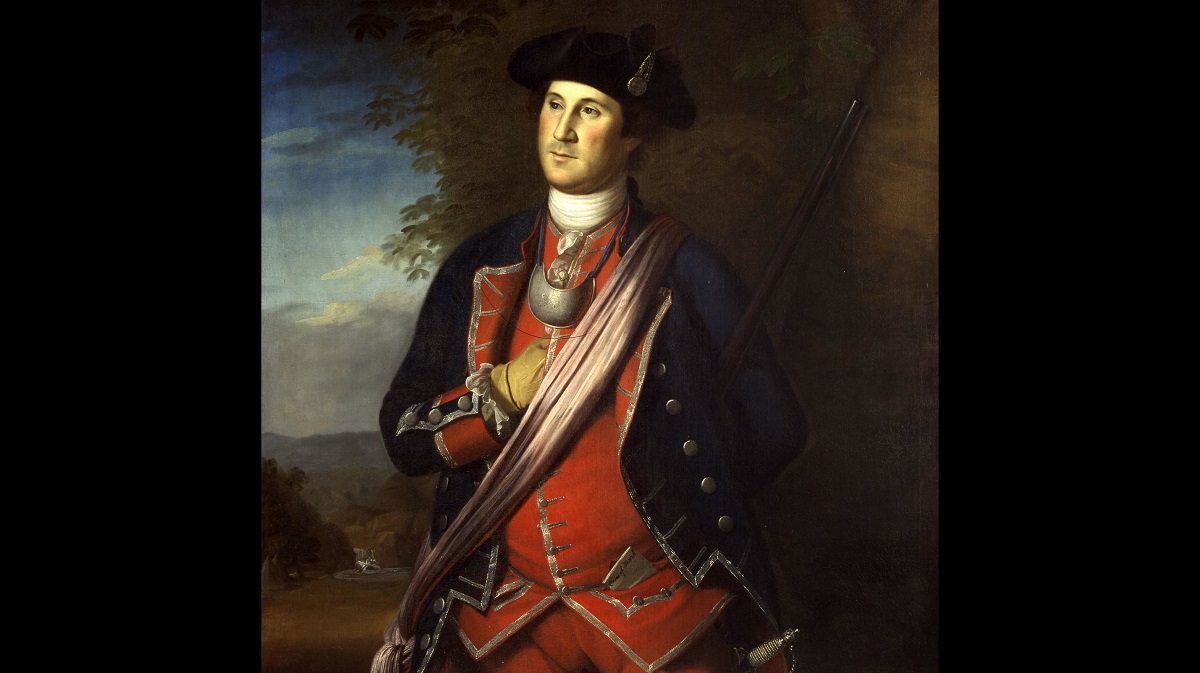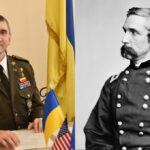
The deeper problem, however, is that the Army seems fundamentally unable to understand or manage its reserve component forces.
The transition away from a permanent, quasi-wartime footing inevitably means that the Army can no longer put off its need to shrink. The reserve component is the obvious place to husband some level of near-ready military talent to accommodate an eventual need for re-expansion to War on Terror levels and, if needed, to full mobilization. I have noted elsewhere that the Army’s active component seems unable to accept the proposition that reserve component capacity (in the Army National Guard for combat and combat support formations and the Army Reserve for combat service support functions) must necessarily increase to accommodate a reduction in active component end strength while minimizing the loss of military capabilities. Husbanding capabilities in the reserve components turns costly active component formations into budget dust. The deeper problem, however, is that the Army seems fundamentally unable to understand or manage its reserve component forces.
In the context of a trip overseas, the differences in how the active and reserve components are mobilized is noted with some trepidation by those reserve component soldiers and units caught up in the process, but largely ignored by the Army as a whole. A recent experience—in which my current Army National Guard unit was mobilized to active duty within the United States—again brought the differences in the treatment afforded to active and reserve component soldiers into sharp relief. The fact that the reservists, once mobilized, were stationed on an Army post within the continental United States, serving alongside active component soldiers but subject to very different standards of conduct and behavior, made these differences in treatment even harder to ignore. Divorced from the context of wartime exigencies, these pernicious distinctions became almost impossible to understand.
This time it is not about bedding—although, tellingly, mobilizing through the Mobilization Force Generation Installation on this occasion soldiers in my unit were provided with no sheets or blankets at all. At least we were forewarned of the shortfall and packed our issued sleeping bags for use on top of the plastic covered mattresses inside the provided temporary barracks. It is heartbreaking as a leader to watch your junior soldiers walk to the post exchange and use their meager pay to purchase pillows and other items that should be provided by the Army.
Unlike my previous overseas mobilizations, this time the standards applied to us and only to us were easier to see. Mobilized for duty within CONUS, the contrast in treatment between that afforded to active component soldiers and to us mobilized reservists was thrown into greater relief. In short: reservists, mobilized in peacetime for duties within the United States, were subject to restrictions wholly different in character and import from the rules and regulation applied to the active component soldiers alongside whom we were expected to serve.
The use of soldiers domestically (not for warfighting tasks, but as extra manpower available to the government when no one else is) caused some authorities to question if the special depravations that typically characterize military service continue to make sense. It certainly is the case that living alongside our fellow Americans—especially other soldiers not subject to the same restrictions—caused me and the other reservists in our unit to question the fairness of the conditions under which we are serving.
I don’t mean to suggest shortcomings in the individuals called upon to lead the formations of which I am a part. Due to my position in the unit, I have had the opportunity to meet the leaders in my chain of command and work closely with many of them. On the whole they have impressed me—“regulars” and reservists both—as talented leaders and fine people. The problem appears to be an institutional, not individual, one.
It also isn’t the case that our living conditions are harsh or substandard. Although some soldiers in the unit are housed in remote and less-than-cosmopolitan locales, commercial hotel lodging was arranged, and this accommodation can be both reasonable and pleasant. Rental cars are provided to allow groups—or in the case of more senior leaders, individuals—to get from place to place (although there are certain restrictions on bringing the rental cars to sports stadiums or amusement parks and they cannot be used to transport non-military personnel, no doubt for insurance reasons). We don’t pay for gas, even for weekend trips to the pool or to the gym. A generous daily stipend is provided to fund food purchases. Military and civilian movie theaters, parks, restaurants, and local recreation facilities are available for the use of our soldiers in areas where they are available.
What are we prohibited from doing that the active duty soldiers on the same base are permitted? In short, the deployment of our unit from one part of America to another has been treated throughout as though it was analogous to transportation to an overseas theater of war. This is the case—as many people saw during the pandemic—even though the types of jobs soldiers are typically called upon to perform in peacetime (outside of temporary disaster relief missions—not our gig) are jobs that civilians would typically perform, but for which an adequate number of civilians are somehow not available. Our soldiers are, essentially, the workers sent forward by a massive government temp agency.
PROHIBITED: Deciding for ourselves who could and could not come into our individually-purchased hotel rooms (soldiers in the unit were not provided with government lodging, but instead obliged to purchase the aforementioned hotel rooms with their government travel cards, individually issued credit cards, charges on which the soldiers are responsible for payment, even though typically the costs accrued are eventually reimbursed to the soldier by the government). Not only were any of the other soldiers in the unit—our only friends in this part of the country—forbidden from being our rooms, but the soldier’s own family was also expressly forbidden from staying in the rooms with him or her. So long as no additional cost to the government is occasioned by the family member’s presence, it is difficult to understand why such co-occupation would not be permitted.
PROHIBITED: Driving or owning our own vehicles. Even on the weekends.
PROHIBITED: Renting or purchasing real estate for occupation. If one of our spouses decided to move to the community where we are stationed, we are both prohibited from renting or purchasing real estate for them to live in as well as being prohibited from living with them in lodging they procure. Even after duty hours. Even on the days we are off duty.
PROHIBITED: Purchasing or possessing firearms. This wasn’t a prohibition from having personally owned weapons while at work—a completely understandable restriction, albeit one that did not apply to civilians in the particular state in which I am stationed. We couldn’t buy or possess firearms at all. To put this in context, the post exchange—the official Army store on the Army post where we are stationed—sells pistols, rifles, and shotguns. Just not to us.
PROHIBITED: Alcohol consumption. The absolute prohibition on drinking—which we experienced overseas on prior overseas tours and, again, during the mobilization process for this mission—was lifted, but only in favor of a two-drink maximum that applied to all our soldiers, all the time. We are prohibited from going to a bar—any bar—to consume those two drinks.
While prohibitions on overnight guests, the use or possession of personal vehicles, real estate, firearms, or hanging out in bars—no matter how unlawful or wrong-headed the restrictions—can cut down on misconduct within the command, it seemed curious that these restrictions did not apply to other soldiers serving in the same area, in the same post, or even in the same chain of command. No doubt others in my unit marveled alongside me at what must be the super-disciplined active component troops on our base. These paragons of virtue and discipline can be trusted to go home every night, drive their own cars, see their families after the end of their duty day, regulate their alcohol intake, have a firearm at their residence, and still manage to come to work every day? Wow. Perhaps after another nineteen years in uniform I might aspire to the same privileges.
Certain other restrictions are, perhaps, not that unusual for active-duty troops, but still weird. Prohibitions on patronizing certain establishments. Controls on the distances authorized to be traveled away from our duty location when not on duty. The need to check in and out of our residences (again, hotels) at all times, even on non-duty days.
The unit that preceded us had imposed all sorts of other, additional restrictions on their own personnel—a curfew, regular inspections of their individually rented hotel rooms by unit leadership—which we were able to get rid of when we took over the mission. Still other restrictions which they had imposed, essentially on themselves, we maintained. Again, due to my position in the unit I had some input into these policy decisions and, perhaps, personally share in some of the institutional wrong-headedness that these policies represent. So, to the other deployed guardsmen and women in my unit: if you wanted a goldfish in your room and realize that you can’t (because having pets is prohibited), at least know that I realize I might be part of the problem.
And after all this, one of the command’s primary concerns on this deployment is for the soldiers’ emotional well-being. This is a laudable concern, but it is difficult to ignore one obvious cause of the problem. Why, they wonder, do soldiers on such missions feel isolated and alone? Why are suicidal ideations a concern? How come these intentionally isolated and restricted individuals didn’t feel happy and satisfied?
As it turns out, this isolation isn’t a bug, it is a feature. This was driven home for me by one instance when a subordinate National Guard unit was, coincidentally, assigned to serve in a duty location that was near the place to where the unit was actually from. Like most every other soldier in the active duty Army, that meant that these reserve component soldiers might actually be able to return home at the end of their duty day, or on weekends, to spend some time with their loved ones, spouses, or children. Attend their habitual places of worship. Participate in events within their own communities. Instead of celebrating this happy coincidence, that unit was intentionally relocated to a different portion of the operational area so that it was far enough away from home that soldiers to prevent habitual visits.
To add insult to injury, the distinction between us and the soldiers serving in active-duty units beside us isn’t the only inequity. Even soldiers serving in our higher headquarters—to include our own unit’s soldiers who have been seconded there for the duration of the mission—are not subject to the same restrictions that we are. I view it as a small point of pride in our unit and our leadership that, at least as far as the additional restrictions generated at our level are concerned, the same restrictions apply to all our personnel, headquarters and line personnel alike. We take our solace where we can.
It is easy to minimize these issues—the persistent inequality in the treatment of reserve component troops is a testament to this. Also, I can cry about how poorly I and my soldiers are being treated while simultaneously ordering a café latte at the Starbucks drive through. That said, inequality of treatment between soldiers fighting alongside one other in the same force could be viewed as so important an issue that it may have contributed to the creation of United States. We would be ignorant of our own history if we forgot that George Washington’s initial beef with the British forces in America was a personal one, based on just such unequal treatment between state militia members and regular forces. As an officer fighting with the colonial Virginia militia in the French and Indian War, he applied for a commission in the regular (British) army. That request was denied. The issue wasn’t money—also not an issue today, as the pay rates between active duty and reserve officers are the same—but with how officers in the militia were treated (“[a]t the time, officers in the British Army were often placed above their colonial counterparts, regardless of rank. Rather than suffer the indignity of reporting to officers he outranked, he became an unpaid aide to the British commander…”). Small indignities matter. When, pray tell, will we learn?
Garri Benjamin Hendell is a major in the Pennsylvania Army National Guard. He has three completed overseas deployments to the CENTCOM area of operations, three overseas training missions to Europe, leadership and staff positions at the platoon, company, battalion, brigade, division, and joint force headquarters level, as well as having served both in uniform and as a civilian branch chief at the National Guard Bureau. Among other things, he is a graduate of the Army’s Red Team course.
The views expressed in this article are those of the author and do not necessarily reflect those of the U.S. Army War College, the U.S. Army, or the Department of Defense.
Photo Description: George Washington as Colonel in the Virginia Regiment
Photo Credit: Charles Willson Peale – 1772 courtesy of Washington and Lee Unuversity, Lexington, VA




